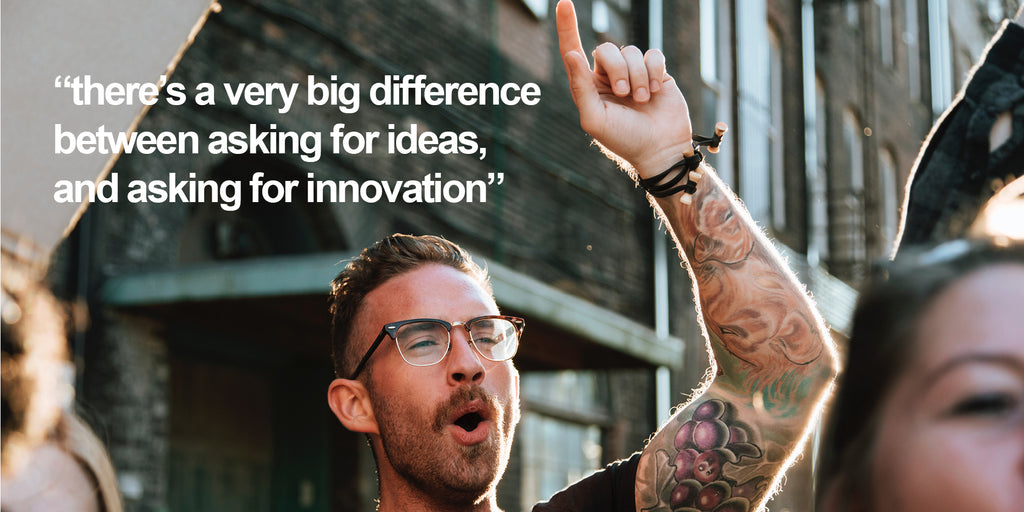It's increasingly accepted that you need to draw on the talents of everyone within an organisation to drive the innovation effort, rather than making this the preserve of an elite group of senior leaders and a dedicated strategy team. But how do you enable an entire workforce to become customer-led, stakeholder focused and entrepreneurial? How do you make innovation a systemic discipline?
There’s a very big difference between asking for ideas, and asking for innovation: if you are to be intentional about driving innovation, the first step is to establish a common language.
- If you can generate new ideas you are creative
- If you can develop these ideas into new products, services or experiences you are inventive
- If from these inventions you can create value for customers, stakeholders, society and for your organisation you are innovative

You also need be very clear about the different levels of innovation ambition, what they entail, and the how the approach to these differs. There's a vast difference between asking your team to optimise the known and to invent the future.
- Innovation of the core, making incremental changes to existing products for existing customers, exploiting current business models, is what large corporations are generally good at doing.
- Innovation into adjacent markets or the development of entirely new products and services, is considerably harder. This level of innovation promises greater returns, and precedents exist outside the organisation to guide your effort, but these are inherently riskier bets.
- Innovation at the transformational level promises out-sized returns but is extremely hard. This is the process of exploring entirely new domains and entails the highest risk of failure. Most large organisations lack the ambidexterity required to simultaneously, and successfully, pursue transformational innovation whilst running their core business.
The more ambitious your innovation intent, the greater the need to develop the capability of your entire workforce to execute it. So how can you build systemic innovation capability?
- First up, ensure that everyone understands your mission. Leaders right across the organisation have a part to play in communicating this, ensuring that the strategy is well understood, and in sponsoring and championing the projects that will create the organisation's future
- Support people from the C-suite to the front line, with processes, methods, tools and training in human centred design and agile ways of working, inspiration, collaboration platforms, spaces and expert support.
- Create platforms and spaces for experiential learning and doing, guided by experts, that encourage behaviours that are the daily practice of highly innovative teams – curiosity, collaboration, visualisation, iteration. Asking 'why?' and 'what if?'.
- Recognise that all ideas are equal, that evidence from experiments, not the opinions of the senior leaders, is what counts, and implement transparent criteria for initial, and continued, investment in ideas and concepts that remove unconscious biases.
- Finally, don't celebrate failure, certainly not for core projects, but do value the creativity, visionary thinking and learning that results from undertaking transformational innovation projects as much as the success in delivering project goals.
Innovation effort within larger organisations rarely fails for a lack of ideas, but for the lack of capability to develop those ideas into desirable concepts, into feasible propositions, and around these to design business models that make these propositions viable, that enable them to not only create value for the customer but capture value for the organisation.
